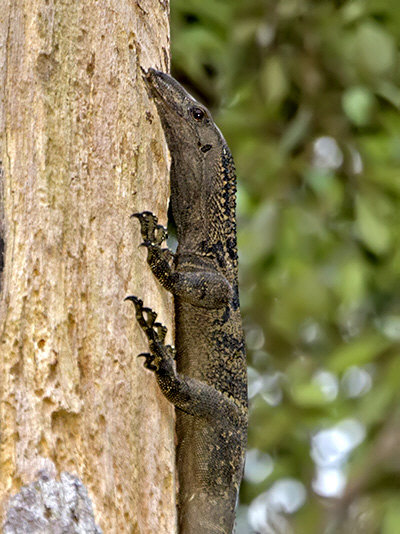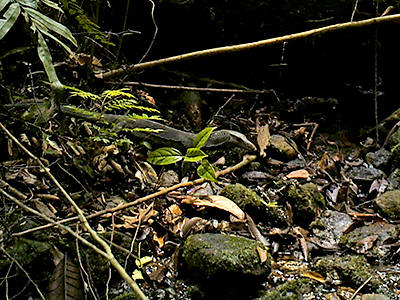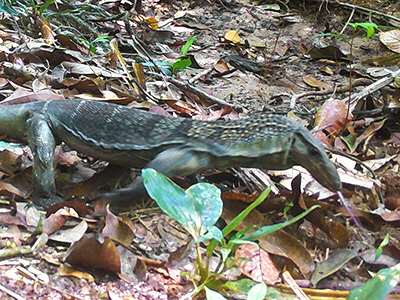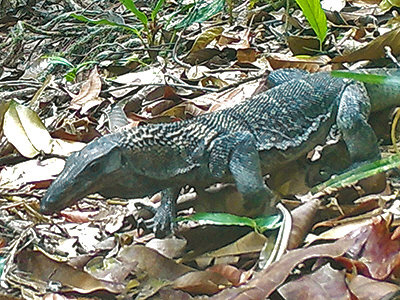
Fig 1

Fig 2

Fig 3

Fig 4
|
Family : VARANIDAE
Species : Varanus rudicollis
Size (snout to vent) : up to 51 cm
Size (total length) : up to 1.32 metres ?
This species of monitor
lizard appears to be rather uncommon, as sightings are quite rare. It occurs
in a broad range of habitats including lowland swamps, stream gullies in
hilly areas, and lower montane forest to around 1200 metres elevation. It
has also been reported from mangrove habitat, which is also a typical haunt of the
larger and more common
Malayan Water Monitor.
The species is called Rough-necked Monitor due to the presence of enlarged
nuchal scales (i.e. the scales on the back of the neck) which are strongly
keeled. Other identifying features include the long, pointed, convex snout,
the base of which is markedly concave.
The nostril lies midway between the tip of the snout and front of the eye
(unlike the Malayan Water Monitor where the nostril is near the tip of the
snout). The skull bears a strong ridge above the eye. The neck is relatively
long, and the tail may be up to 1.6 times the snout-vent length.
The species is mainly dark grey throughout, with yellowish banding across
the back and yellowish mottling on the neck and limbs. Juveniles are more
strongly marked than adults.
This lizard may be encountered on the forest floor, near streams, on fallen
logs or on tree trunks. Typically it takes shelter inside tree holes. Little
is known of its feeding ecology, though crabs appear to be part of its
diet in habitats where there are sufficient crabs.
The Rough-necked Monitor occurs in southern Myanmar, southern Thailand,
Peninsular Malaysia (including the southernmost state of Johor), Sumatra and
Borneo. There are no records, historical or recent, from Singapore.
Fig 1 : Example from Peninsular Malaysia, sunning
itself on the trunk of a dead tree.
Fig 2 : Example
recorded in a rocky gully in lowland, secondary
forest, southern Peninsular Malaysia. The lizard was active by day,
apparently searching for prey.
Fig 3 : Two large adults caught on a hidden trail camera in the lowlands of
Peninsular Malaysia.
References :
Grismer, L. L. (2011). Lizards of Peninsular Malaysia, Singapore, and their
Adjacent Archipelagos. Their Description, Distribution, and Natural History.
Edition Chimaira, Frankfurt am Main. 728 pp.
|